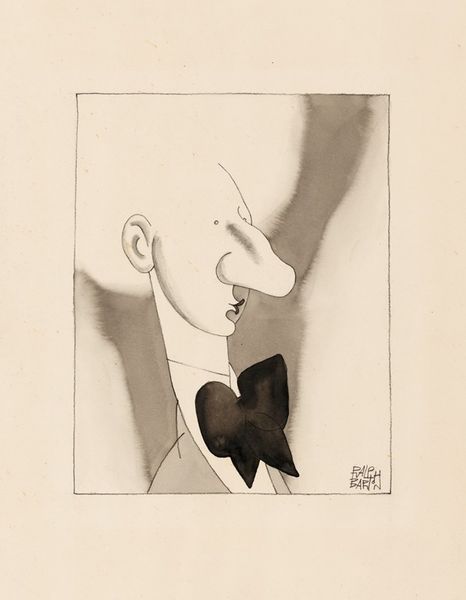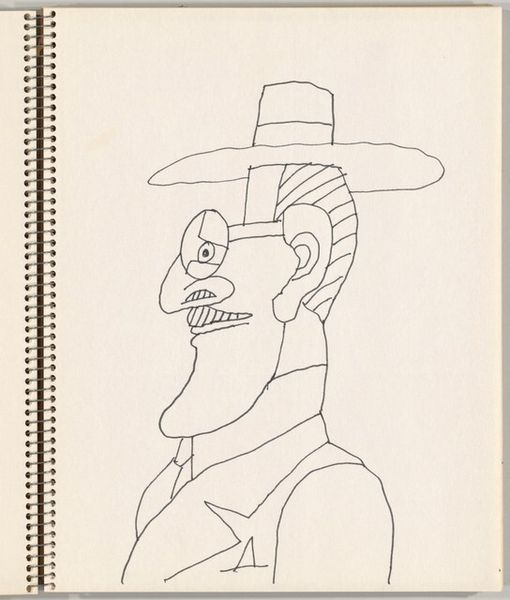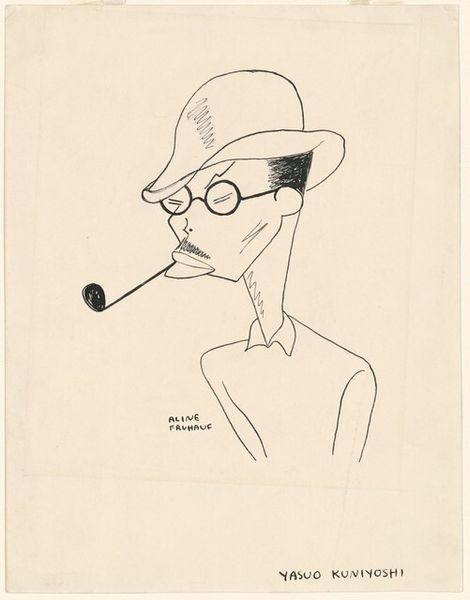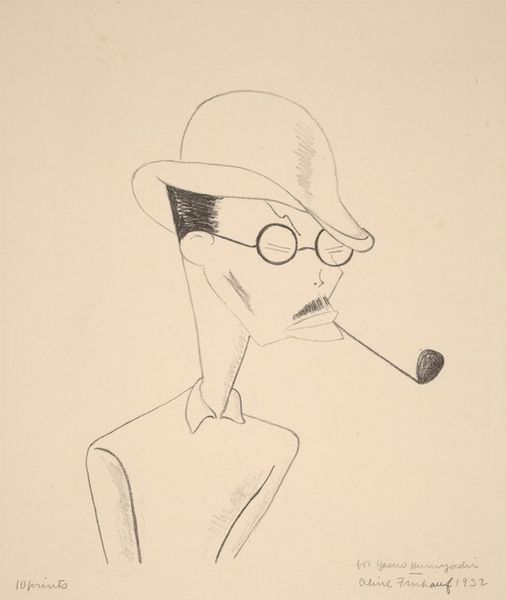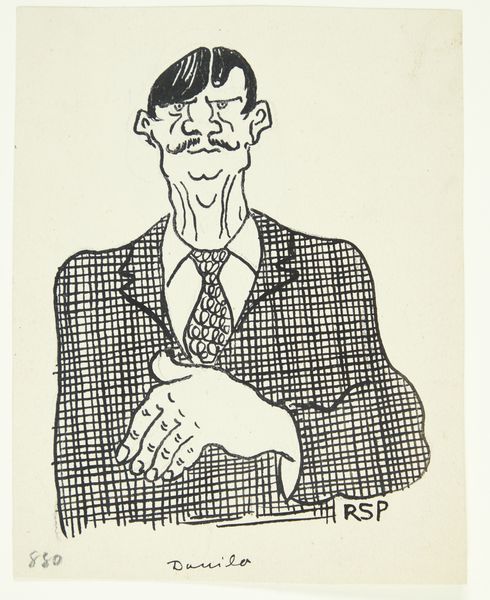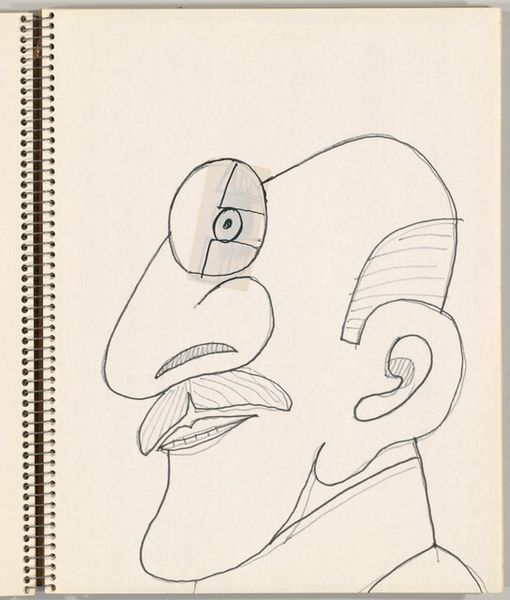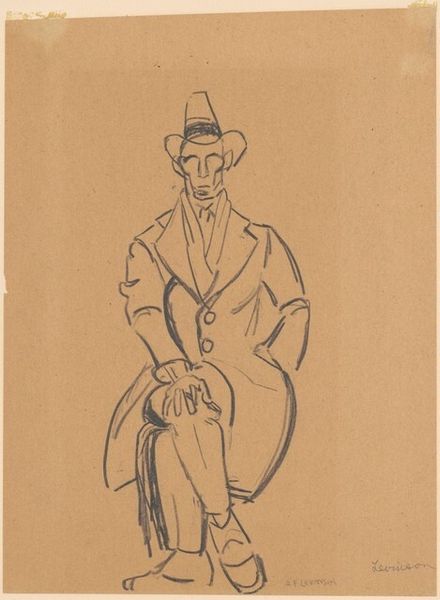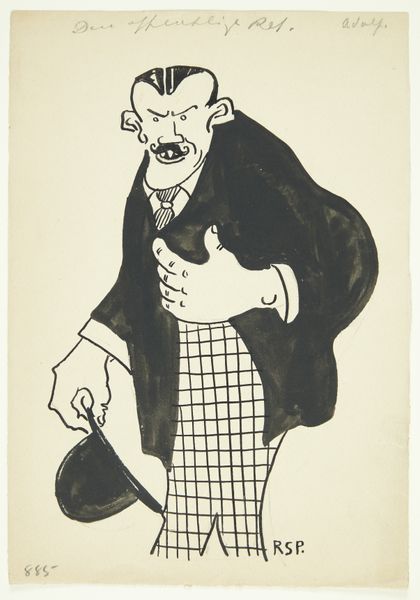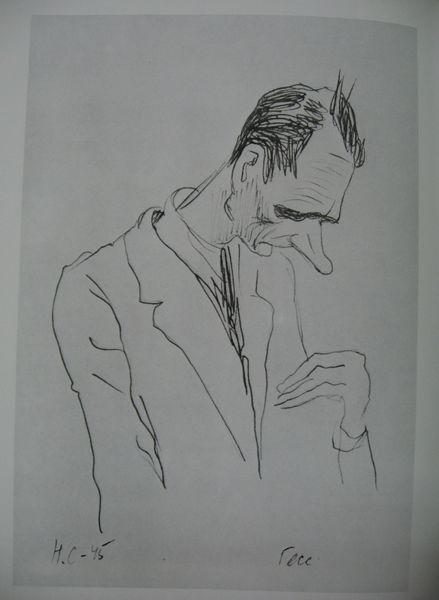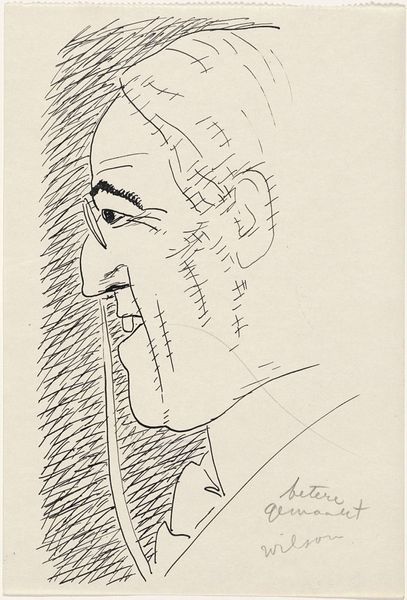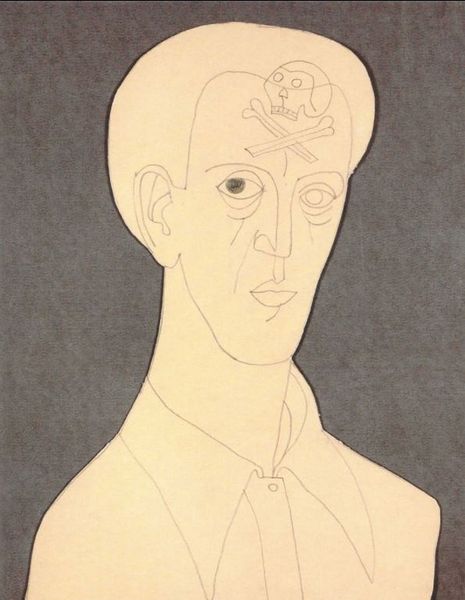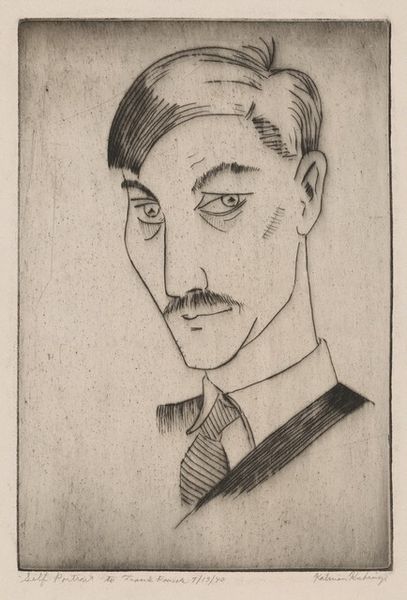
drawing, graphite, pen
#
portrait
#
art-deco
#
drawing
#
imaginative character sketch
#
facial expression drawing
#
cartoon like
#
cartoon based
#
caricature
#
caricature
#
figuration
#
portrait reference
#
line
#
graphite
#
pen
#
portrait drawing
#
comic style
#
cartoon style
#
portrait art
#
modernism
Copyright: Public Domain: Artvee
Editor: So, this is Ralph Barton's "Jimmy Walker" from 1931, a drawing using pen and graphite. The subject’s exaggerated features, almost grotesque, make me think about power and the way it can corrupt. How do you interpret this work? Curator: That's a sharp observation! Barton, through his caricature of Jimmy Walker, is doing more than just creating a likeness. Consider Walker's role as mayor of New York City during the Roaring Twenties. This was a time of immense social change, economic boom, and, of course, prohibition. Walker, seen here with his sly expression and somewhat menacing teeth, embodied the excesses and contradictions of that era. The caricature hints at corruption and a certain moral decay masked by a veneer of sophistication and glamour. What does the art-deco aesthetic evoke for you, within this social context? Editor: I see the Art Deco style lending a certain sleekness, almost a seductive quality, but that just seems to heighten the sense of something being off, of a deceptive surface. So it's not just a portrait, it's a commentary? Curator: Precisely. Barton's drawing functions as social critique, a visual challenge to the glorified image of figures like Walker. It invites us to question who holds power, and at whose expense. It reminds us that representations, especially of those in power, are never neutral. Is Barton’s work relevant to the ways in which contemporary political figures are presented and perceived? Editor: Definitely. We're still grappling with how media shapes our perception of leaders and the narratives we tell ourselves about power. Thanks, I see so much more in this than just a simple drawing now. Curator: Indeed. By engaging with the historical context and the artist's critical eye, we can uncover layers of meaning and connect the past to our present social and political landscape.
Comments
No comments
Be the first to comment and join the conversation on the ultimate creative platform.
